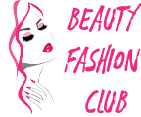Baby hanboks are on the move and are one of the most beautiful clothing for babies. It is a traditional Korean clothing worn for special occasions however made with comfort in mind to be worn casually should that be the case.
How are baby hanboks made?
Baby hanboks are made diversely but most are hand sewn. Traditionally, Koreans used silk to sew the outer garment of Hanboks. These were used for ceremonies and special events. For everyday-wear garments of the hanbok, Koreans used hemp or linen because it was economical and durable. In modern days, you can find hanboks still made of silk, hemp, and linen but most are made with synthetic material due to its affordability.
What colors are used for hanboks?
The colors of the hanboks range from a variety of colors. Traditionally, bright colors were used for baby hanboks and darker colors were used for adults. The time period also mattered; for example, during the Joseon Dynasty, yellow was banned for baby hanboks because this yellow represented royalty and was reserved for only the king. Additionally, certain classes weren’t allowed to use select colors because they were reserved for nobility. However, in modern days, all of these restrictions are lifted because everyone is considered equal regardless of their net worth. You’ll find baby hanboks in all sorts of colors but most designers still prefer to go with bright colors such as pink, orange, gold, and yellow. Our personal favorite are pastel colors that aren’t overbearingly bright that are displayed on Joteta Baby Hanbok Shop.
How are baby hanboks tailored?
Baby hanboks are usually handmade and decorative patterns that were usually embroidered on the hanbok depended on their family’s occupational history or blessings that the parents wished to bestow on their baby. In the past, mothers or the woman in the family would directly hand sew baby hanboks for their baby unless they were of a noble class that had artisans who could make it for them.
On what occasions do babies wear hanboks?
Babies usually wear their first hanbok on their 100th day. In the past, mothers did not let their baby experience the outside world until their 100th day because they believed it would increase the longevity of the baby. So, babies were kept inside and were not introduced to any extended family members. Therefore, their 100th day was a big deal for the family and extended family members because it was during this time, the baby would get introduced to their family and the world.
Babies would also wear hanboks for Doljanchi which is a baby’s first birthday celebration. Doljanchi too was a big deal because many babies were not fortunate to survive up to their first year. So when a baby did survive up to their first year, the family saw this as a blessing and held a big feast and party to celebrate the miracle and to further bless the baby with good luck and fortune through specific traditions like praying to their gods and practicing in a fortune telling tradition called Doljabi.








